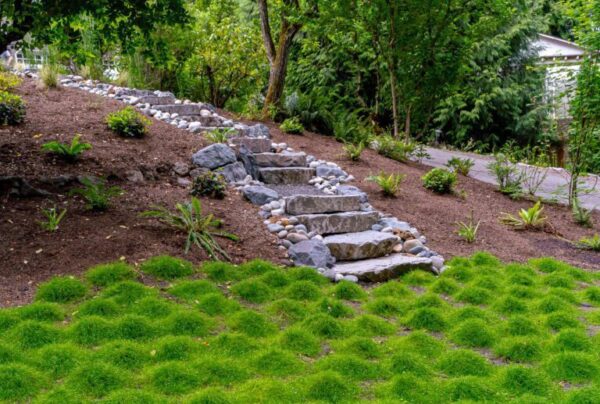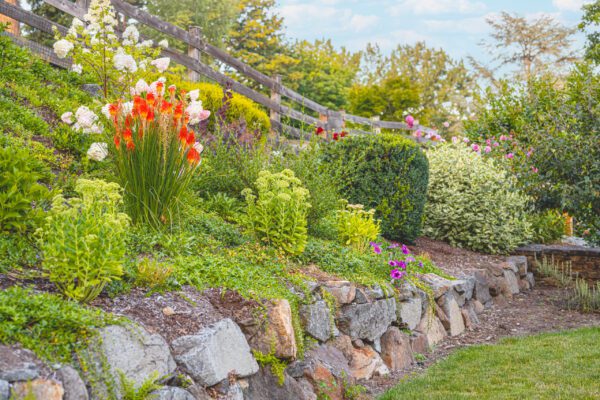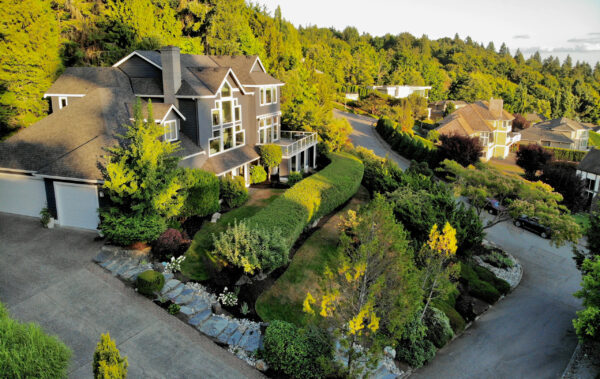Having a sloped yard might seem challenging, but with the right solution, it can be transformed into a highly functional and aesthetically pleasing terraced garden. Terraced gardens offer several advantages such as preventing soil erosion, maximizing space utilization, reducing maintenance, and enhancing the aesthetics of your property.
Ideal Properties for Terraced Gardens
Terraced gardens aren’t just for any property; they are particularly beneficial for homes and establishments that feature sloped or uneven terrain. If your residential or commercial space rests on a hillside, you are the prime candidate for a terraced garden that can convert precarious slopes into usable land. Estate owners with large expanses of unused inclines will find terraced gardens an excellent way to beautify the landscape while making it more functional. Urban dwellings with limited backyard space can also benefit immensely—terraces create extra room for planting, turning a small, sloped plot into a lush, layered oasis. Even architects and property developers can integrate terraced garden designs into new constructions to highlight a harmonious balance between modern living and natural surroundings. Whether you own a suburban home or manage a countryside retreat, terraced gardens are a transformative choice that merges practicality with the beauty of tiered greenery.
The Power and Beauty of Terraced Gardens
Terraced gardens on slopes are much more than just beautiful additions to your outdoor space. They perform a significant function -addressing and preventing soil erosion. By creating multiple levels on a slope, the flow of water is effectively slowed down, preserving your soil’s integrity and crucial topsoil needed for plant growth. In addition, the retaining walls often made from concrete or stone, provide stability to your landscape which is crucial for plant roots and reduces the risk of plants uprooting.
The beauty of terraced gardens is not just found in its functionality but also in its visual appeal. Terraced gardens break the monotony of steep slopes, adding visual interest with different materials, textures, and a burst of color from lush vegetation and flowers. Every terrace can serve different purposes, be it for growing vegetables, accommodating native plants, or even incorporating seating areas. With such versatile options, a terraced garden can truly become the captivating focal point of your property.
Replacing Sloping Lawns with Terraced Landscapes
Terraced landscapes significantly reduce the effort and maintenance that comes with sloping lawns. Mowing can be a challenge on a slope, but with terraced gardens, this concern is eliminated. Moreover, the terraces can be planted with mixes that require much less maintenance than standard lawns. This not only enhances the usability of the area but also allows for a more aesthetically pleasing and diverse plant life.
Key Benefits of Terraced Gardens
- Prevents Soil Erosion: By slowing down water flow, they protect the integrity of the soil and safeguard valuable topsoil.
- Maximizes Space: Terraced gardens expand the usable growing area in sloped yards, offering new opportunities for landscaping and cultivation.
- Reduces Maintenance: With structured sections, these gardens are easier to maintain than a continuously sloped yard.
- Enhances Curb Appeal: The varying levels of a terraced garden add a visually striking element that can increase property value.
- Promotes Plant Health: Sturdy retaining walls protect plantings from being uprooted and help maintain healthy root systems.
- Versatility in Design: They provide a creative canvas for a diverse range of plants, garden styles, and functional spaces like seating areas.
- Eco-Friendly Solutions: Terraces can support local flora, encourage biodiversity, and provide an environmentally sustainable landscaping approach.
Choosing the Right Professional for the Job
Building a terraced garden is not just about incorporating levels into the landscape. It involves a deep understanding of the terrain, the ability to ensure safety, and the creative skills to transform your vision into a beautiful and functional space. Collaborating with experts like Classic Landscape + Nursery is a perfect way to ensure a professional approach to your landscape project. From creating a seamless blend of functionality and aesthetics to meeting safety standards, their team can transform your outdoor space into a stunning terraced garden.
Investing in a professional landscaping service can indeed make all the difference. The outcome of your landscape project not only meets but often exceeds your expectations. Discover the transformative power of terraced gardens and let it redefine the aesthetics and functionality of your outdoor space. Embrace the beauty of terraced gardens and let Classic Nursery and Landscaping guide you in elevating your outdoor space.
Want to learn more about Landscape Design, Construction and Maintenance? Get started with these articles!
- Comprehensive List of Landscape Construction Elements
- Discover How a Landscape Designer Can Enhance Your Outdoor Space
- Considerations for Selecting your Landscape Plants in Western Washington
- Exploring Different Landscape Design Styles
Professional Landscaping Services
Investing in a professional landscaping service can make all the difference in the outcome of your landscape project. While it may appear simple to design and build a beautiful and functional outdoor space, it takes significant expertise, effort, and knowledge to create an area that is both aesthetically pleasing and functional. A professional landscaper can take your vision and turn it into a reality, while ensuring that safety standards are met and the final result exceeds your expectations. So if you’re looking to invest in a stunning outdoor space, consider seeking the help of a professional landscaping service. You won’t regret it!


